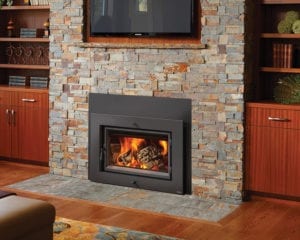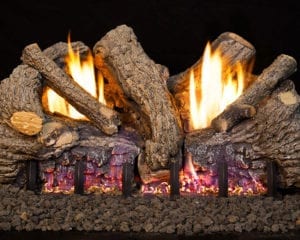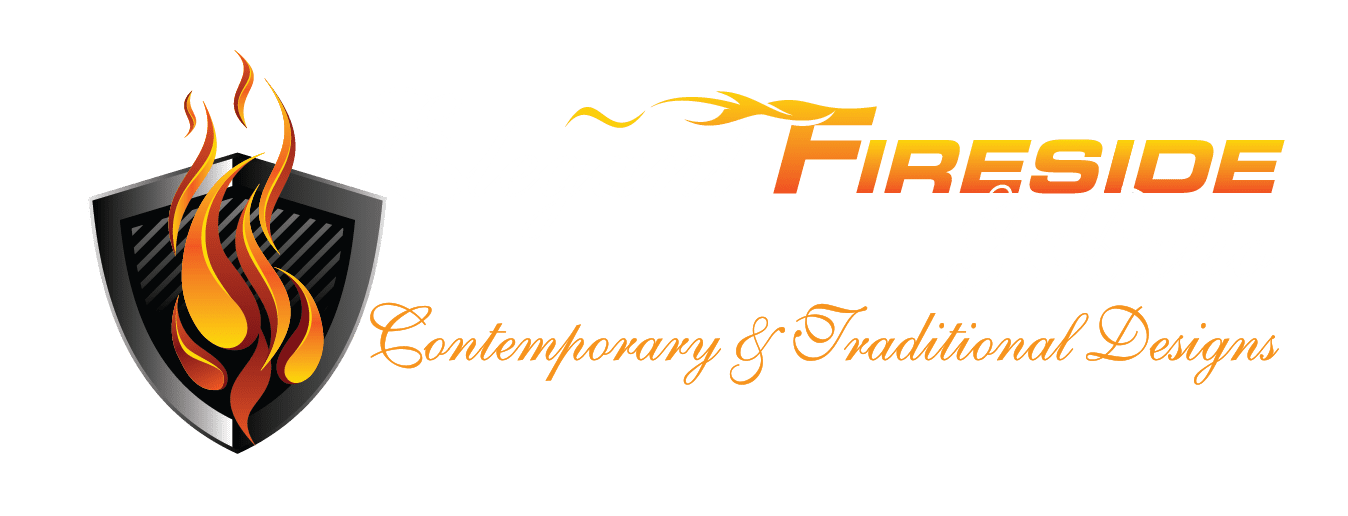Most people at some point have had or been around a wood burning fireplace, stove, or insert. It seems fairly straight forward, but most people who burn wood have been doing it wrong. There is a lot of opinion type advice out there, but in this article we will cover the do’s and do not’s of wood burning. At the end we will share a few basic tips to help your wood burning experience be an enjoyable one.
Here are some of the DO’s for wood burning.
DO burn only seasoned hardwoods. Soft woods will not burn as hot, and they produce much more creosote which is what causes chimney fires.
DO have the damper fully open. Some people think that by only cracking the damper they will reduce heat loss up the chimney; when in fact, they are only allowing carbon monoxide and particulate matter back into their home.
DO have the fireplace and chimney regularly cleaned/swept. According to the Chimney Safety Institute of America a chimney should be cleaned after each cord of wood burned. At a minimum the fireplace should be inspected every 5 years.
DO have the proper tools, spark guard, and a grate. Having the right equipment will make burning wood much easier. The essential tools here are a poker or tongs, shovel, and ash broom. Grates are where the wood is placed, and the general rule is the taller the better. Taller grates allow for more air flow into the fire, and a larger coal bed which is where most of the radiant heat from a wood fire comes from. The width of a grate should be based on the length of firewood being used.
DO use a proper fire starter. A gas log lighter is the best, but any kindling or store bought firewood starter is ok.
DO have a proper fitting chimney cap. Chimney caps are actually known as spark arrestors. These not only prevent animals and water from getting into the chimney, but it’s actual function is to knock any hot embers or sparks back down into the chimney. This prevents roofs and nearby structures or plants from catching fire.
DO clean the glass frequently on your wood stove or wood insert. This will prevent the need for tough scrubbing or premature glass replacement.
DO have a working smoke alarm in every bedroom, and in all shared spaces. Also, you should have them in your attic spaces.
AND NOW FOR THE DON’Ts
DON’T use it as a trash incinerator. Things like plastic have tons of chemicals that get released into the chimney, the atmosphere, and into your home. These chemicals are often caustic which damages the flue. They are also toxic and when your fireplace “backpuffs” into the home you are putting highly toxic chemicals into the air you’re breathing. ALL WOOD BURNING FIREPLACES LEAK BACK INTO THE HOME AT ONE POINT OR ANOTHER. Paper is also bad. Not because of the chemicals so much, but because they can float up the chimney partially burned or smoldering and travel long distances while still lit. Paper also has a tendency to clog the screen on the top of the chimney.
DON’T use things like lighter fluid, gas, solvents, or anything that is not labeled as wood fire starter.
DON’T try to put a fire out using water. If you can’t wait for the fire department, use a proper extinguisher.
DON’T leave a fire unattended. Ever.
DON’T hit the walls inside of the firebox with the tools, logs, or grate. The bricks or panels inside the fireplace become very brittle when heated. This is the cause of 99% of all cracks in the firebox not related to water or foundation damage.
DON’T close the fireplace doors (unless it’s a stove or insert) while there is a fire burning. It is okay to close them once the flames have died down to just a bed of coals.
DON’T leave the door of an insert or stove open when burning. This can cause the fire to accelerate to unsafe temperatures and warp or damage the appliance.
Wood Burning Tips
- When starting a fire with a gas log lighter you can use the log lighter to preheat the flue. Burn the gas for 5 minutes prior to adding wood and you reduce the chance of smoke coming back into the house.
- Try not to burn woods commonly used to smoke food with. This smells great when you’re pulling up to the restaurant or the BBQ, but it will eventually cause your home to smell like a smoking pit. Once it has the odor, it is extremely difficult and expensive to remove.
- Turn off the furnace. Fireplaces draw massive amounts of air into the chimney. Your furnace will keep running and never catch up because the fireplace is constantly pulling outside air into the home.
- Lint from the dryer is a fantastic fire starter. Wad a small amount up and add it to your kindling to make it easy to start your fire. (Also, clean your dryer vents regularly!)
- If your fireplace/stove is smoking, crack an adjacent door or window. This increases the draft and air pressure in the home helping to push the smoke up the chimney.
- Regular chimney sweeps. They reduce the smoke odor, and prevent hidden problems from being found before they get too expensive to fix. Most importantly, it prevents chimney fires.
- Try to keep the coal bed raked as close to the front as safely possible. The majority of the heat from an open wood fire comes from the coals. By keeping them raked to front you will feel more heat into the room. Additionally, keeping the coals away from the grate and log lighter (if you have one) will add a few years to their life.
- Crack the door on your wood stove or wood insert for 5 minutes after the starting of the fire. This will help the fire start faster and help heat the flue faster. Don’t leave it open for more than 5 minutes. (stove manufacturers hate this, but it’s true)
You can visit our social media for more details about wood burning.

